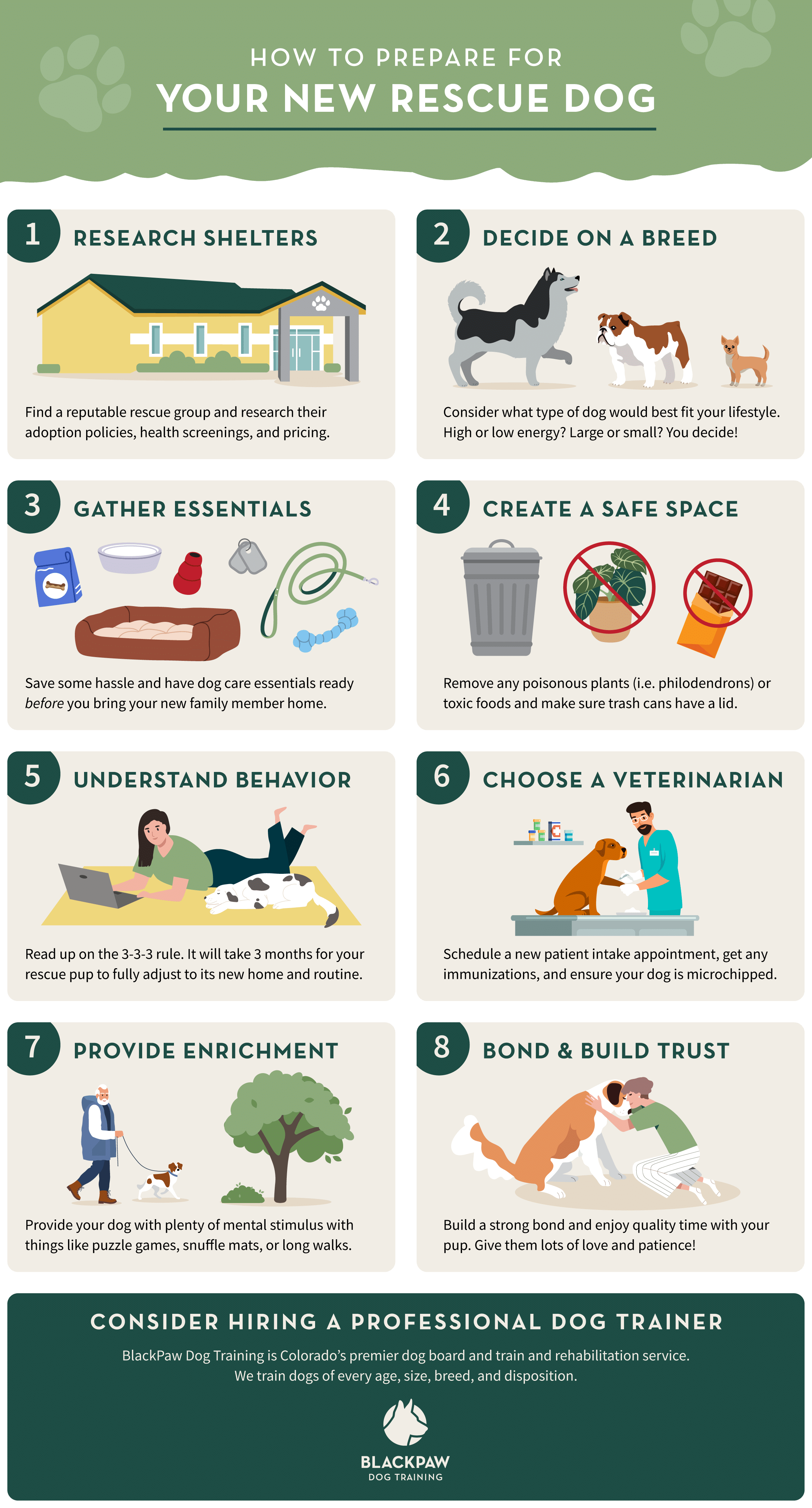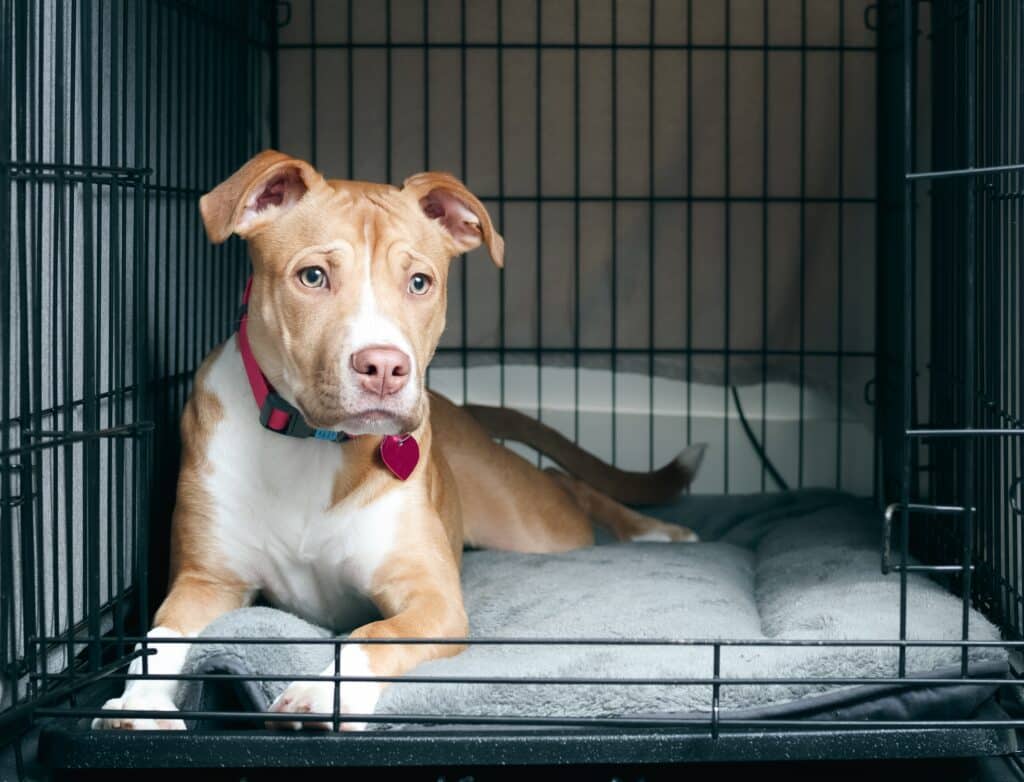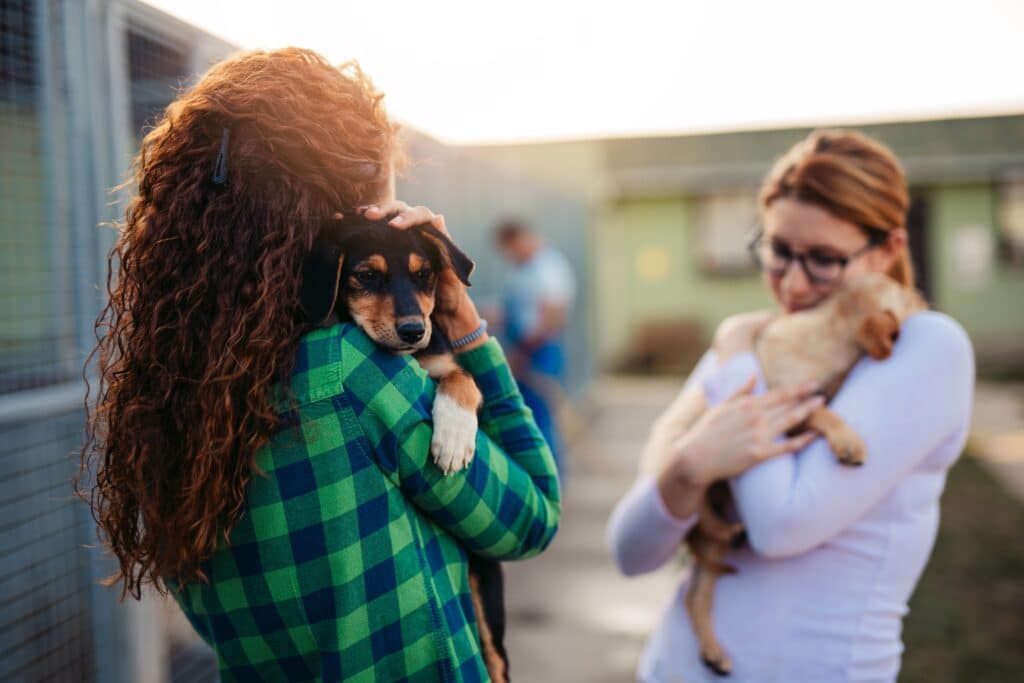Bringing Home a Rescue Dog
Congratulations! You’re thinking of bringing home a rescue dog. Adopting a four-legged friend is so rewarding, and we commend you for it. Being prepared before bringing home your newest fluffy family member is a step that should not be skipped over. Here are some ways to prepare for your new rescue dog.

4 More Tips on Bringing Home a Rescue Dog
The above infographic gives you nine different ways to prepare for a rescue dog, but let’s dive into a few more.
Potty Training a Rescue Dog
Let’s start with the basics: potty training your rescue dog. If you’re bringing home a rescue puppy, a good rule of thumb is to take them out at least once per hour during the day (around 8 times per day.) If your rescue pup is an adult dog, you should still take them out frequently so they understand where they should go when they need to “go.” You should also get your dogs on a feeding schedule which makes their potty schedule easier to predict. If your pup is struggling with this, professional puppy training can be a great option.
Some more tips for potty training your rescue dog are:
- Don’t free-feed, set a feeding schedule.
- Take them out right after each meal.
- Crate train.
- Use our umbilical cord training (keeping them on a short leash next to you.)
- Keep an eye on signals that mean they need to go potty.
- Take the dogs to a designated “potty spot” every time.
- Don’t scold your dog for leaving a mess if you don’t see them do it.
- If you catch your dog having an accident, clap your hands and quickly take them outside.
How to Help a Rescue Dog Settle In
Another huge role for you in bringing home a rescue dog is learning how to help a rescue dog settle in. It’s important to keep in mind that this is a new environment for them, and they may feel overwhelmed. Some studies have shown that rescue dogs can take 3 days to adjust to their new surroundings, 3 weeks to settle in, and 3 months for continued socialization and training. So be patient, please.
Things to do to help your rescue dog settle in:
- Keep your newest family member on a routine.
- Establish boundaries and house rules.
- Keep calm around your rescue.
- Slowly integrate socialization.
- Give your rescue dog enough personal space.
- Crate train to keep them safe and help them feel secure.
- Use positive reinforcement when training.
- Prepare their new home before they arrive.
- Have realistic expectations for you and your new dog.
- Consider hiring a professional dog trainer.
Crate Training a Rescue Dog
Let’s get into crate training a rescue dog. Crate training is important to keep your pup feeling secure and safe. This helps with potty training too since dogs naturally avoid using the bathroom where they sleep. You want your dog to love their crate. Make their “den” cozy and remove choking hazards if you’ll be away. It’s also important not to use their crates as punishment! This way, your rescue pup won’t associate being in their crate when you leave or at bedtime with them being punished.

More tips on crate training your rescue dog:
- Start with short periods inside the crate with the door open and rewarding calm behavior with treats and praise.
- Gradually increase crate time as your pup gets comfortable.
- Feed meals in the crate to create a positive association.
- Choose a crate that’s big enough for your dog to stand up, turn around, and lie down comfortably. (If it’s too big, they may use the bathroom in it.)
- Add a comfortable bed to promote relaxation.
How to Train Your Rescue Dog
Bringing home a rescue dog is amazing, but communication is key to a happy home. Lucky for you, training your pup can be a rewarding adventure you can take on together. Learning how to train your rescue dog can take learning for both sides, you and your dog. First, always use positive reinforcement! Reward those good boys and girls with yummy treats and enthusiastic praise for all the good things they do. Did they go potty outside? Did they sit on the first command? Reward them like they’ve just reinvented the wheel. This will not only build trust between you and your rescue pup, but it will also make learning new tricks fun. If your rescue dog is struggling with behavior like lunging, growling, and/or anxiety, consider an extended boarding doggy school program run by professional dog trainers and behaviorists.
Things to keep in mind when training your rescue dog:
- Master basic commands first.
- Some good first commands to learn are: “sit,” “stay,” “come,” and “leave it.”
- Train in 5-10 minute intervals.
- Be patient, be patient, be patient!
- Stay positive.
- Keep training fun and engaging.
- Always bring treats with you, especially on walks.
Benefits of Rescuing a Dog
There are so many benefits of rescuing a dog. You’re giving a deserving pup a second chance at life and love, but you’re also setting yourself up for a lifetime of heartwarming love. Consider a two-week boarding dog training program once your pup is settled if you are not seeing the progress you want with your own training.
More benefits of rescuing a dog:
- You are saving two lives: the one you bring home and the one taking their now-freed space in the shelter.
- Unique personalities and shapes and sizes to match your lifestyle.
- Loyal companions, guaranteed.
- Every time you come home, there’s a wiggle butt waiting on you.
- You gain a new family member.
- Rescuing a dog is more affordable than buying from a breeder, with adoption fees covering most medical essentials.
- You’ll increase your activity levels, a win-win for you and your pup.
- Make more friends because your dogs are now friends.
- Petting your rescue dog can improve your overall stress levels and lower blood pressure.
- Mutts tend to have lower incidences of inherited disease, such as some cancers, back problems, and hip dysplasia.
- If you are someone who wants a pure-bred dog, you can find those at shelters too.
- Rescue dogs may already be potty trained and have some other basic commands down.
- Never hike, walk, or sleep alone again.
Bringing Home a Rescue Dog is Bringing Home Love
Bringing home a rescue dog is more than just adding a pet to your family; it’s opening your heart and home to a deserving companion. It’s about witnessing their tail wags of pure joy, their unconditional love, and their goofy antics that will leave you smiling ear to ear. It’s a journey of patience, understanding, and building a lifelong bond.
While this guide can give you a great starting point for bringing home a rescue dog, every canine friend is unique. If you encounter challenges or have questions about professional dog training, reach out and our professional dog trainers will be happy to help.

